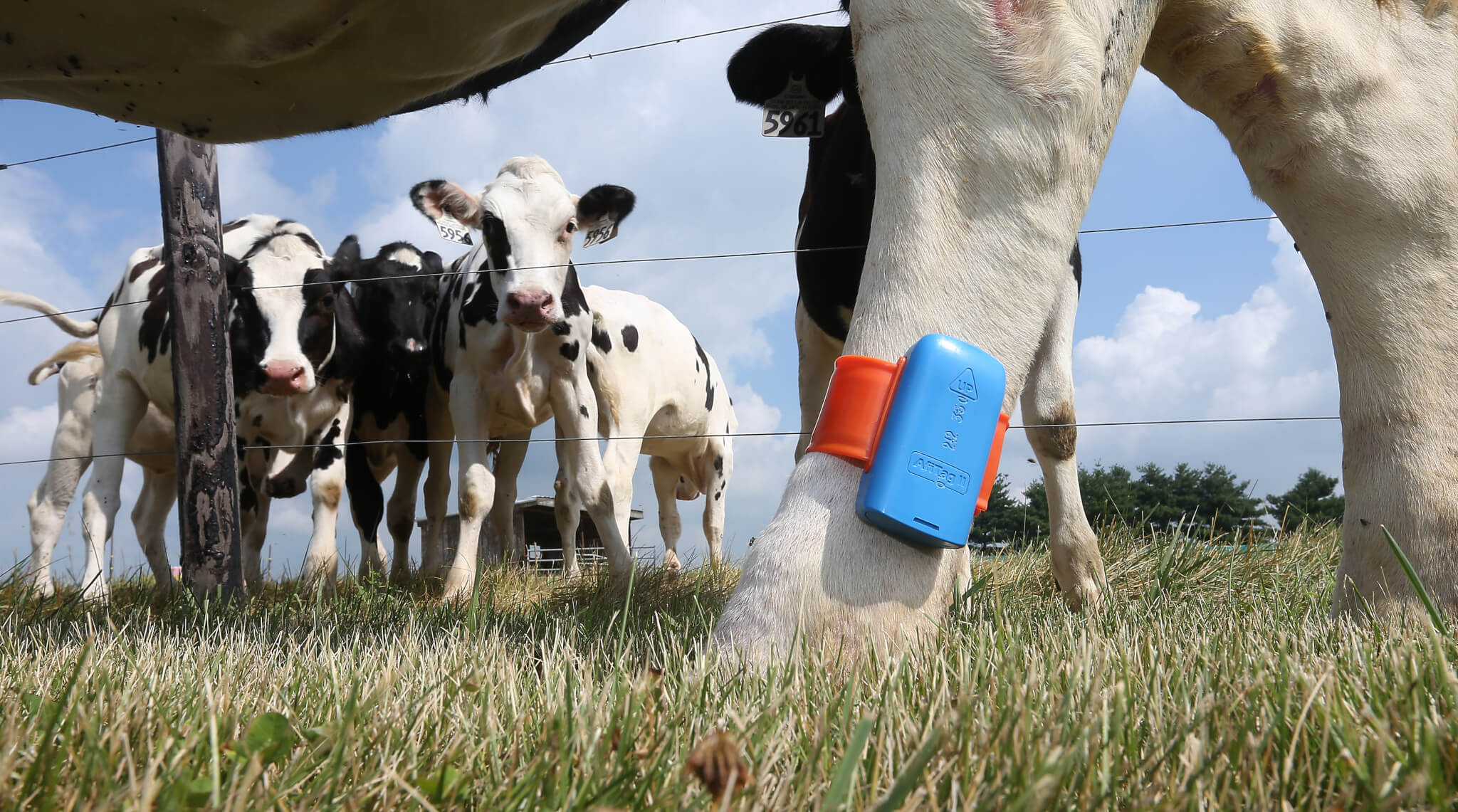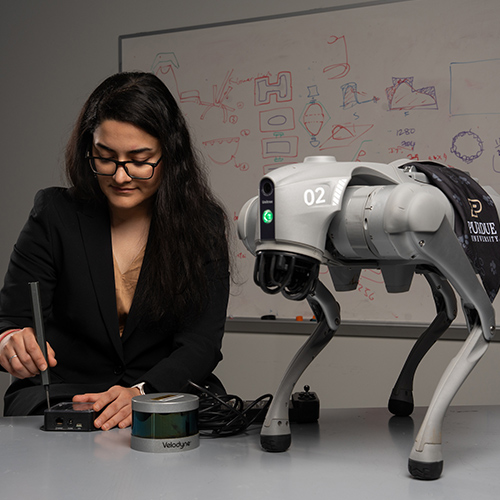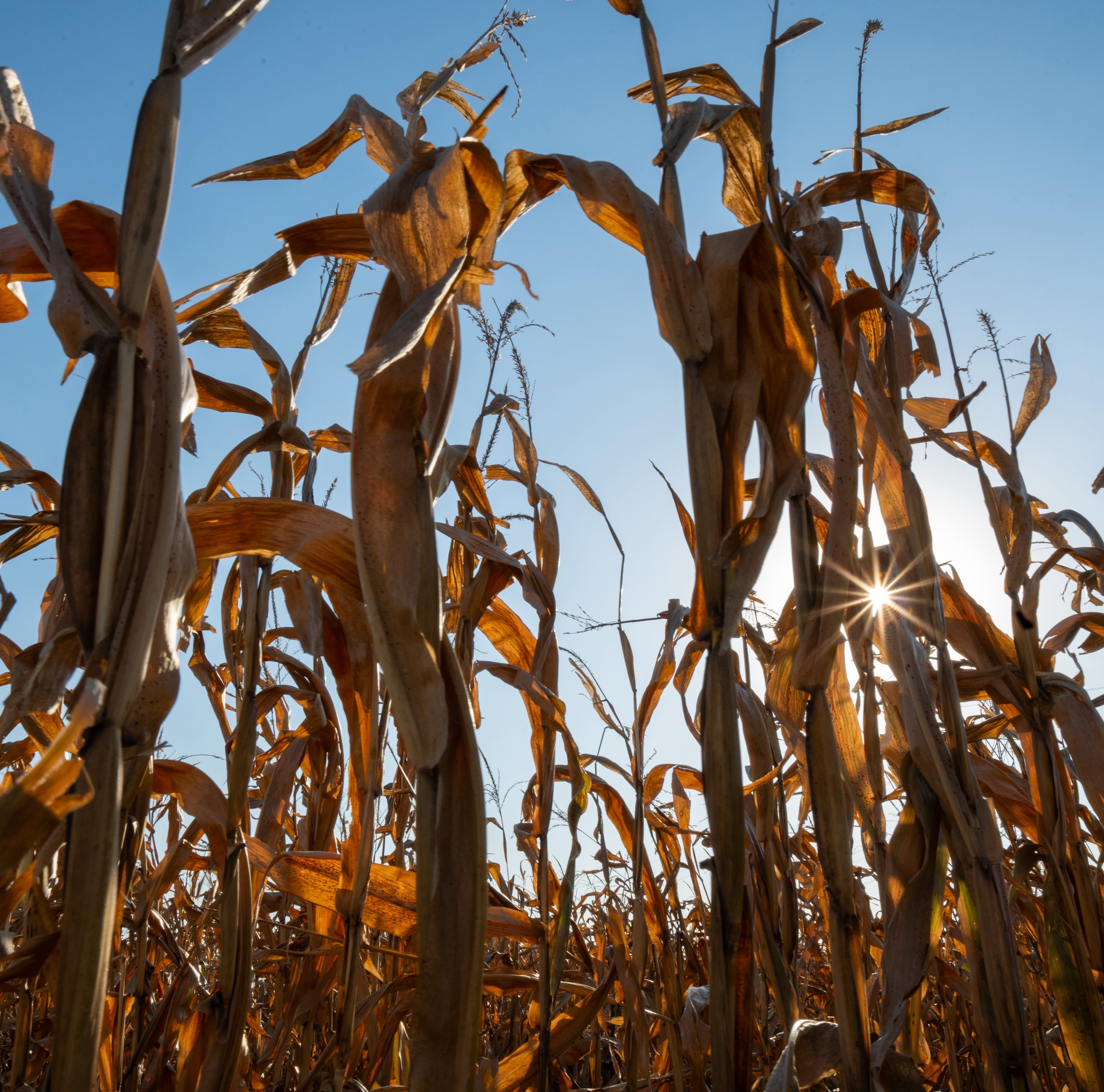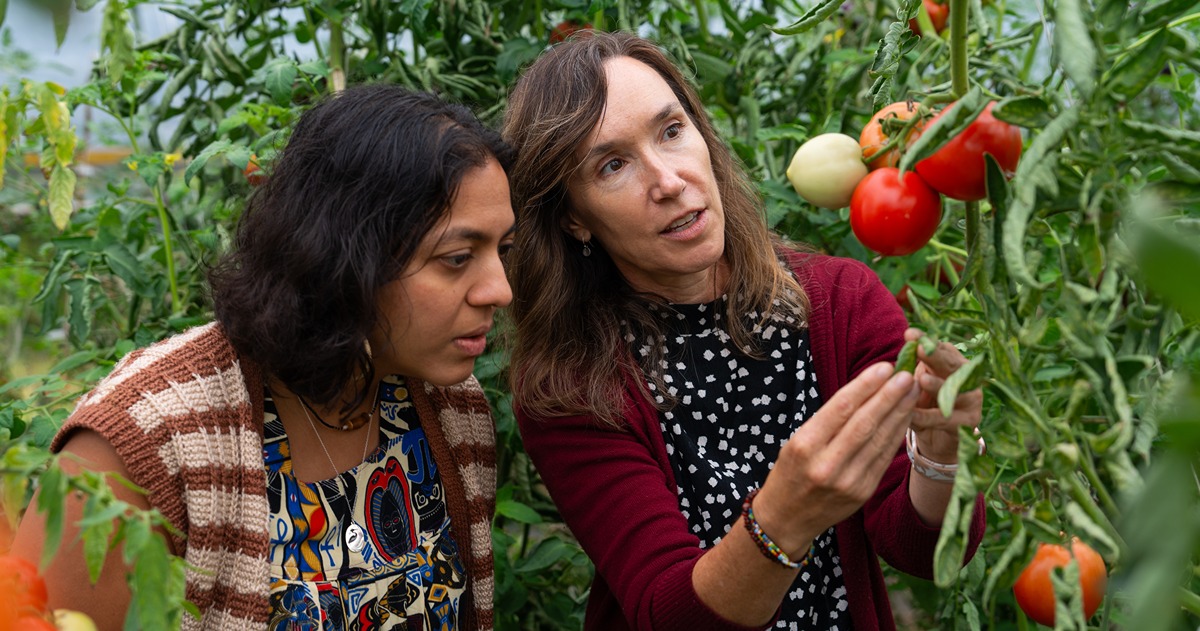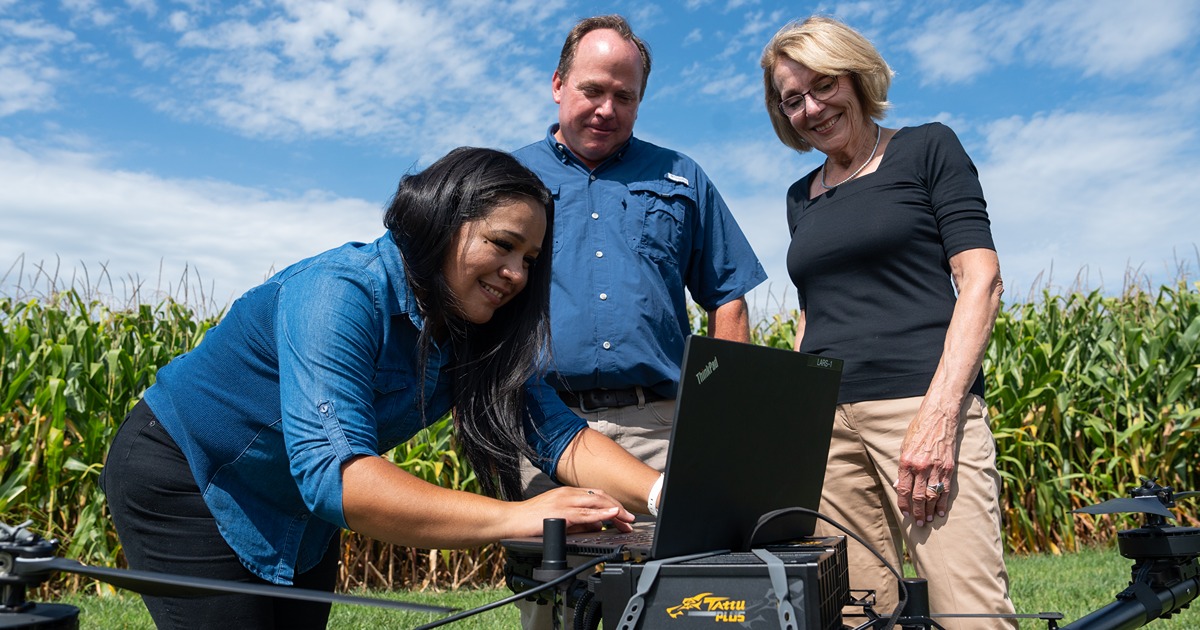Digital agriculture: Why the future is now
What is digital agriculture?
How is digital agriculture going to change the landscape of farming over the next decade?
It depends on who you ask.
Digital agriculture is the seamless integration of digital technologies into crop and livestock management and other processes in agriculture. For farmers, digital agriculture offers the opportunity to increase production, save costs in the long-term and eliminate risk. Agricultural researchers see it as a data-gathering tool that has the ability to streamline data collection and analysis, enhancing predictive capabilities when it comes to crop management and animal behavior and production. For ag-tech companies, digital agriculture is the gift that keeps on giving as the industry drifts increasingly towards automation and use of digital technologies.
Many see digital agriculture as the future of the industry. At Purdue University’s College of Agriculture, however, the future is unfolding now, in different patterns and paces across campus.
“Digital agriculture is already changing the landscape of agricultural research by allowing many more sources of data to be brought together for interpretation,” said Karen Plaut, the Glenn W. Sample Dean of the College of Agriculture. “This enables the development of apps with specific functions, real-time decision making, and expanding the field of predictive agriculture.”
“Digital agriculture is already changing the landscape of agricultural research by allowing many more sources of data to be brought together for interpretation,”
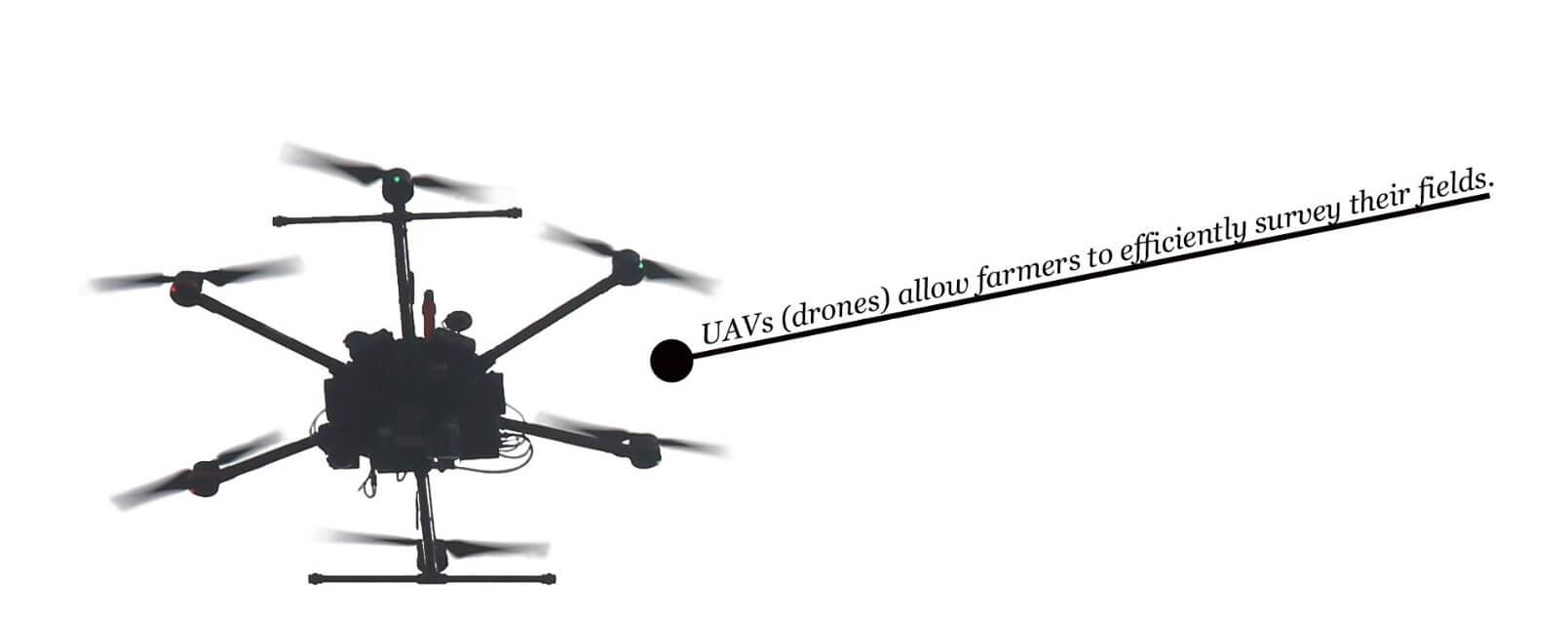
Commonly used technologies include sensors, communication networks, unmanned aerial vehicles (UAVs), robotic machinery, Artificial Intelligence and other advanced machinery and technologies. These tools are already utilized by researchers and Extension experts across campus and the state. Purdue Extension experts, like agronomy professor Bob Nielsen, are forging a path for UAV usage when it comes to surveying crops. At the Controlled Environmental Phenotyping Facility, plant scientist Yang Yang simulates different weather conditions (e.g. drought) and using digital imaging determines how plants respond to varied weather conditions. And, in her lab, Plaut studies circadian rhythms of cows using specialized temperature sensors that can obtain a constant recording of body temperature over 48 hours.
These are only a few examples of the many ways researchers employ digital agriculture technologies at Purdue. It is, in part, the ubiquity of advanced technologies and internet-capable devices that precipitated the surge in digital agriculture research and usage.
“The advent of smart phones and iPads has changed the landscape entirely with the capability now to make real-time decisions and to use new sensors that give instantaneous information,” Plaut continued. “We can now get data from many more sources than ever before and we can put those data together to make decisions. That is the power of digital agriculture.”
A closer look: Digital agriculture in animal sciences
Jacquelyn Boerman, assistant professor of animal sciences and Extension dairy specialist, said she recently started integrating digital agriculture technologies into her research, but she already appreciates the potential it offers in terms of enhancing research and production. While Boerman trained as a dairy cow nutritionist, she finds herself making forays into digital agriculture to better understand how aspects of nutrition and health impact the productivity of dairy cows. She works closely with dairy farmers across Indiana to understand how technologies are adapted from the lab to the barnyard and where the needs of dairy farmers remain unmet.
“There is an increasing amount of data that is generated and farmers want to make decisions with that data,” Boerman continued. “As farms get larger and we continue to improve milk production per cow, farms need to rely on individual cow data that is gathered from technology to continue to improve.”
Already, dairy farmers around the state and the country incorporate digital agriculture into management practices. Feed management software, dairy records software, milk meters, pedometers and rumination collars, used to monitor cud-chewing, are common on dairy farms. Boerman partners with an Indiana dairy farm that uses auto-feeders to study how early-life health influences growth, reproduction and milk production later in life.
“We are finding that early-life health influences milk consumption in the auto-feeder and that there may be an optimal amount of milk that we allocate to calves to optimize efficiency,” Boerman said.
Marisa Erasmus, assistant professor of animal sciences, explained that in addition to enhancing livestock’s productivity, digital agriculture can promote animal welfare and health. And, as it turns out, healthy animals are typically more productive.
Erasmus uses digital agriculture, specifically accelerometers and video imaging, to study poultry behavior and wellbeing. Her most recent study focuses on how heat stress and immune challenges alter the behavior of turkeys. Accelerometers are used to measure the activity level of turkeys after exposure to these stressors.
“We want our findings to be practical for farmers,” Erasmus said. “If we can use sensors to get information about when bird behavior changes due to a stressor, then we can identify early time points when intervention might happen.” Intervention will look different depending on the stressor but, for example, sensors can help indicate early signs of illness or heat stress, signaling that farmers may need to change the animals’ environment.
“Monitoring automatically and in real-time also has other benefits,” Erasmus continued. “We are able to collect more data, of course, but we can also help eliminate risk. If there is a disease outbreak, for example, you want to limit contact with animals early on to prevent spreading the disease. Different technologies can help do this.”
Some types of digital technologies for poultry management aren’t as widely used as those available for monitoring of larger livestock, like cows. Poultry farmers are not yet widely using technology like accelerometers because they are often cost-prohibitive and there is usually a large number of birds, so tracking individual animals is not practical.
One technology Erasmus is exploring that is more adaptable to the barnyard is video imaging of poultry. Right now, she said, she is collecting video of poultry, which is analyzed by students in her lab.
Eventually, however, Erasmus hopes to develop algorithms that automatically analyze the data, an advancement that would be as helpful to her as to farmers. Erasmus views this as the next major challenge for digital agriculture, catching the data analyzation process up with the data collection process. It’s also an area ripe for interdisciplinary work.
“We are trying to combine different areas of expertise when it comes to monitoring animal wellbeing,” she added. “Engineers and computer scientists have a greater sense for how to manage and analyze large amounts of data. In animal sciences we have a better sense for how to integrate the technology and gather data.”
Boerman also sees the collaborative potential of digital agriculture. She works with Amy Reibman, professor of computer and electrical engineering, to solve several of the roadblocks in her own research.
“Amy has increased my understanding of what is possible with digital agriculture, and exposing her to dairy farms has given her the opportunity to think up potential solutions,” Boerman said. “I think leveraging other people’s skills always increases productivity. Purdue has a lot of people who could work well together and develop solutions for animal agriculture.”
Challenges going forward
While Purdue may be a digital agriculture pioneer, this also means researchers are some of the first to identify major obstacles.
Boerman and Erasmus’ research exhibit two of digital agriculture’s major challenges: Efficiently processing and interpreting large quantities of data and transitioning technologies from the lab to the farm. Part of smoothing that transition doesn’t just mean making cost-efficient technologies, it also requires maintaining and building infrastructure in rural agricultural communities. “Some technologies require high speed internet, which would be a challenge in rural areas,” Boerman explained.
“Data is messy,” she continued, “and it takes time to clean the data and get it into a usable format. Another one of my current frustrations is having to work with multiple data sources in order to compile and complete a data set. That is an issue farmers will have as well.”
Making technologies available to farmers is a priority for Erasmus, and an area where she said ag-tech companies will prove helpful. For example, Erasmus is currently working with a private ag-tech company, Novateur Research Solutions, to develop an algorithm that tracks animals on video. “We are actually looking at whether we can identify animals that have a parasite infestation,” she said.
"In our Controlled Environment Phenotyping Facility, researchers can subject plants to drought or overwatering and not only can they take images of plants that help them interpret the shape, size and leaf number, but also to non-destructively interpret the ability of each leaf to photosynthesize. We can also image the roots and interpret how they impact plant growth and development. Because these sophisticated tools do not destroy the plant, we can measure plant characteristics over time as the plant grows, which is something we could not do before."
- ~Karen Plaut
While every agricultural sector has contributions to make in the digital agriculture realm, Plaut said Extension plays a major part in breaking down barriers farmers face when it comes to digital technologies.
“One of the roles of Extension and our Purdue Agricultural Centers (PACs) is to help move technologies into the barnyard or the field,” Plaut said. “For example, Extension and the PACs work with producers on farms across the state, helping them to fly unmanned aerial vehicles (UAVs), get their pilot’s license and determine what software they should use, all to help farmers develop their ability to use UAVs for decision making. The PACs play an integral role in this work, often being the first place that research advances are tested to determine their practical application.”

